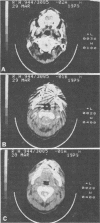Abstract
Thirteen patients who sustained spinal cord trauma causing persisting disability, developed new symptoms, the chief one of which was severe pain unrelieved by analgesics. The clinical diagnosis of post traumatic syringomyelia was confirmed in each case by means of myelography, as well as endomyelography in seven patients. In every case exploration of the spinal cord syrinx was performed. Ten patients were troubled by severe pain while three patients were mainly subject to altered sensation in the upper limbs. Of the six patients who had initially sustained complete cord transections, three were treated by cord transection and three were treated by syringostomy. The seven patients who sustained incomplete cord lesions were all treated by syringostomy. The patients who initially sustained incomplete sensory motor spinal cord damage had a better symptomatic response to surgery than hose who had sustained a complete spinal cord lesion. The ten patients whose main symptom was severe pain were completely relieved of their symptoms by surgery.
Full text
PDF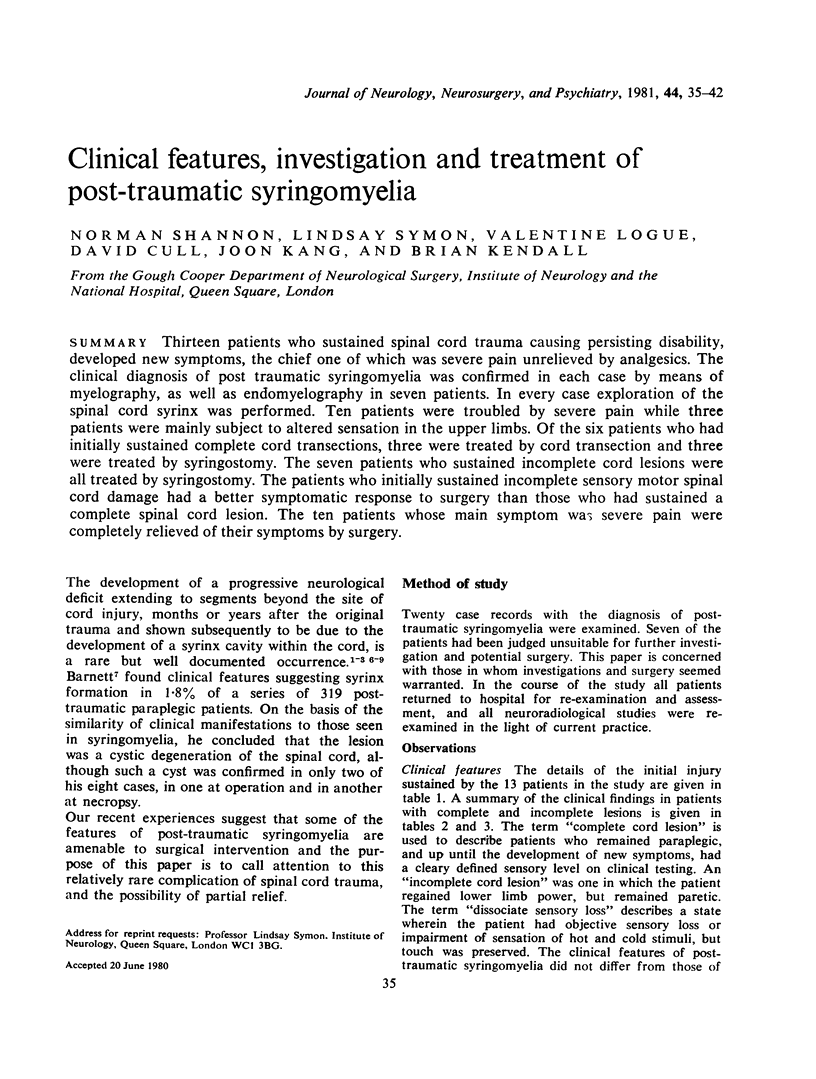

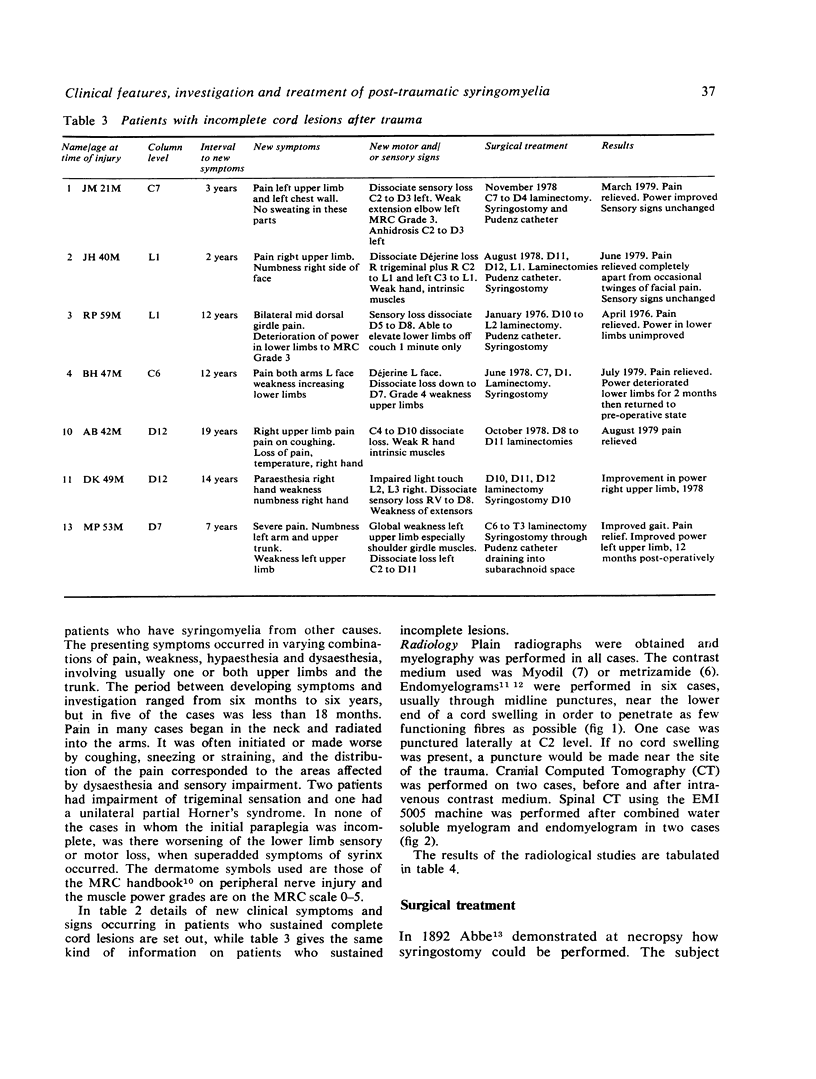
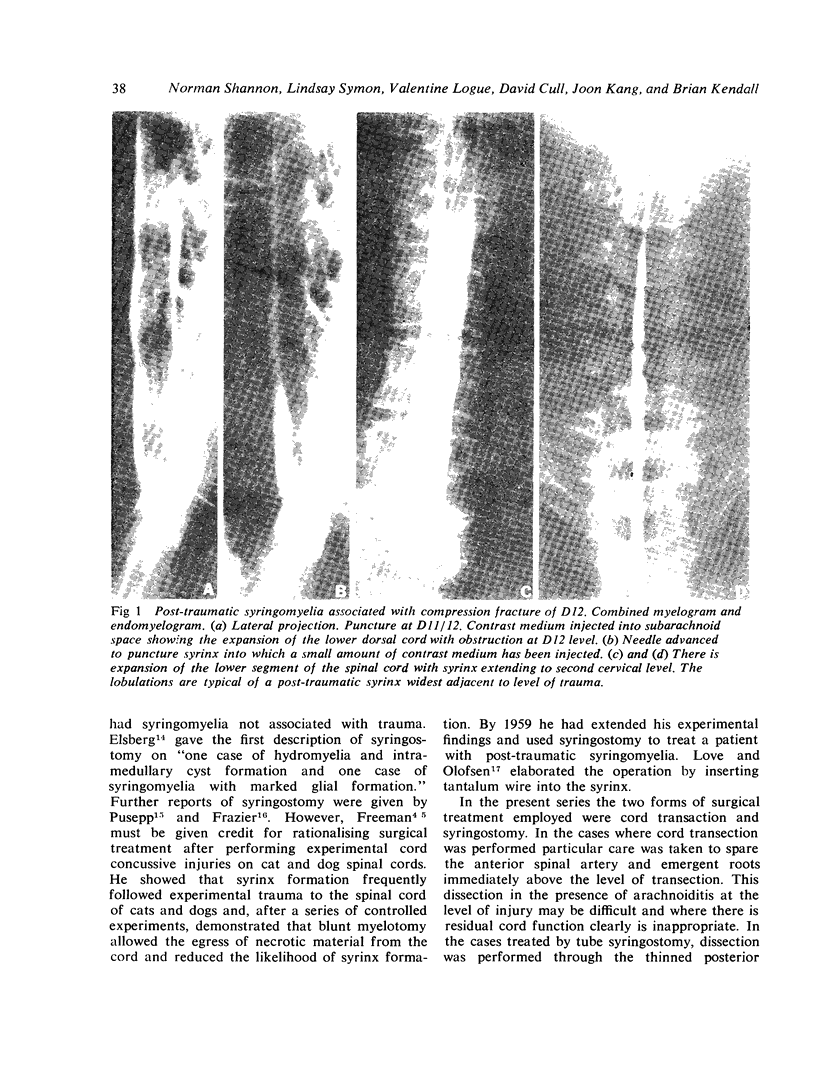
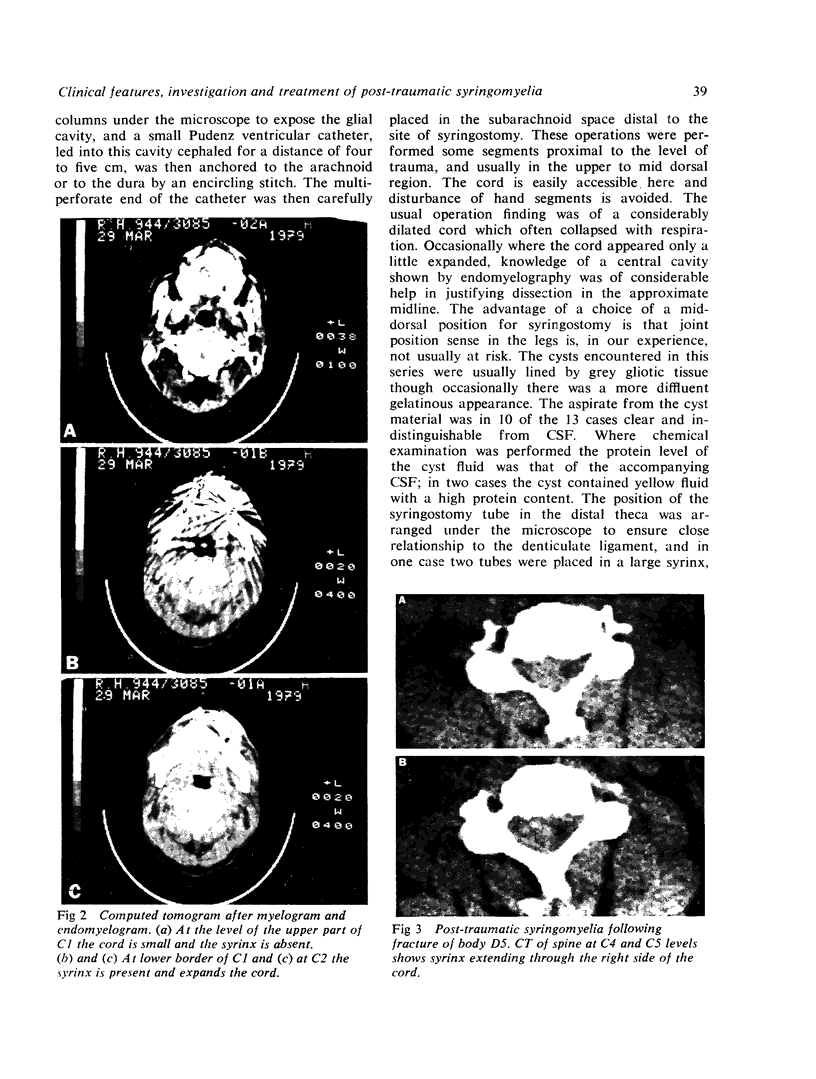
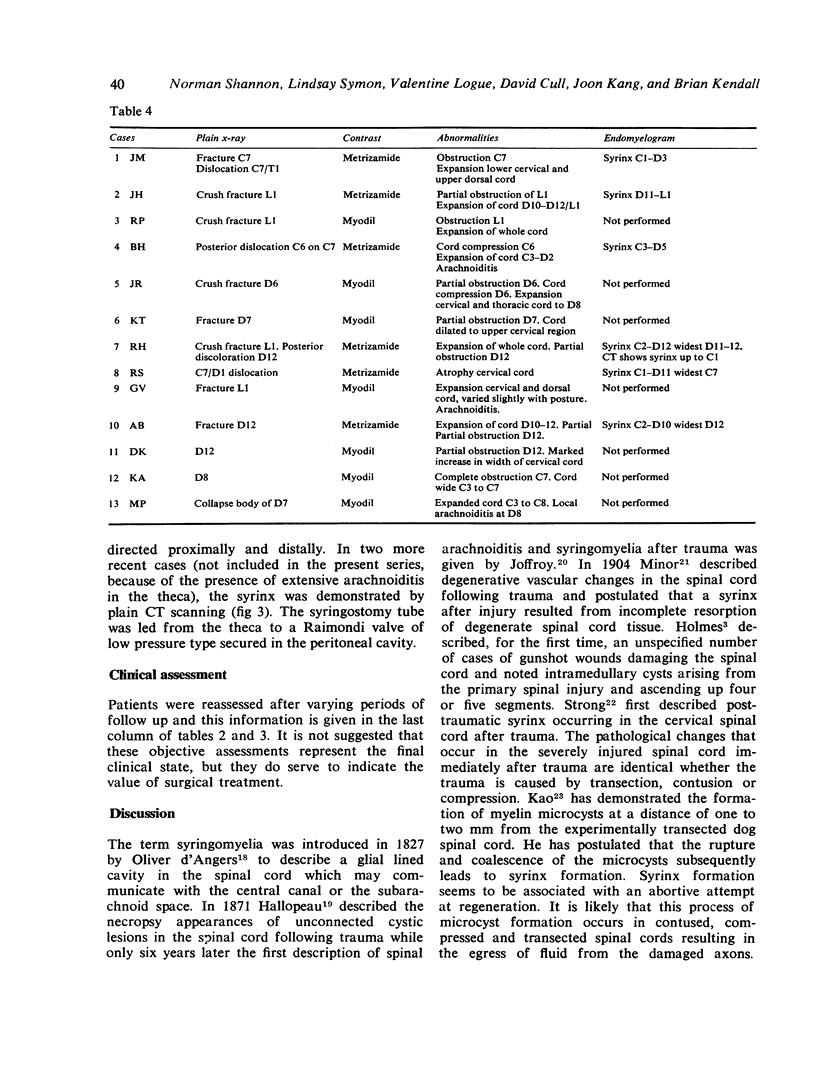
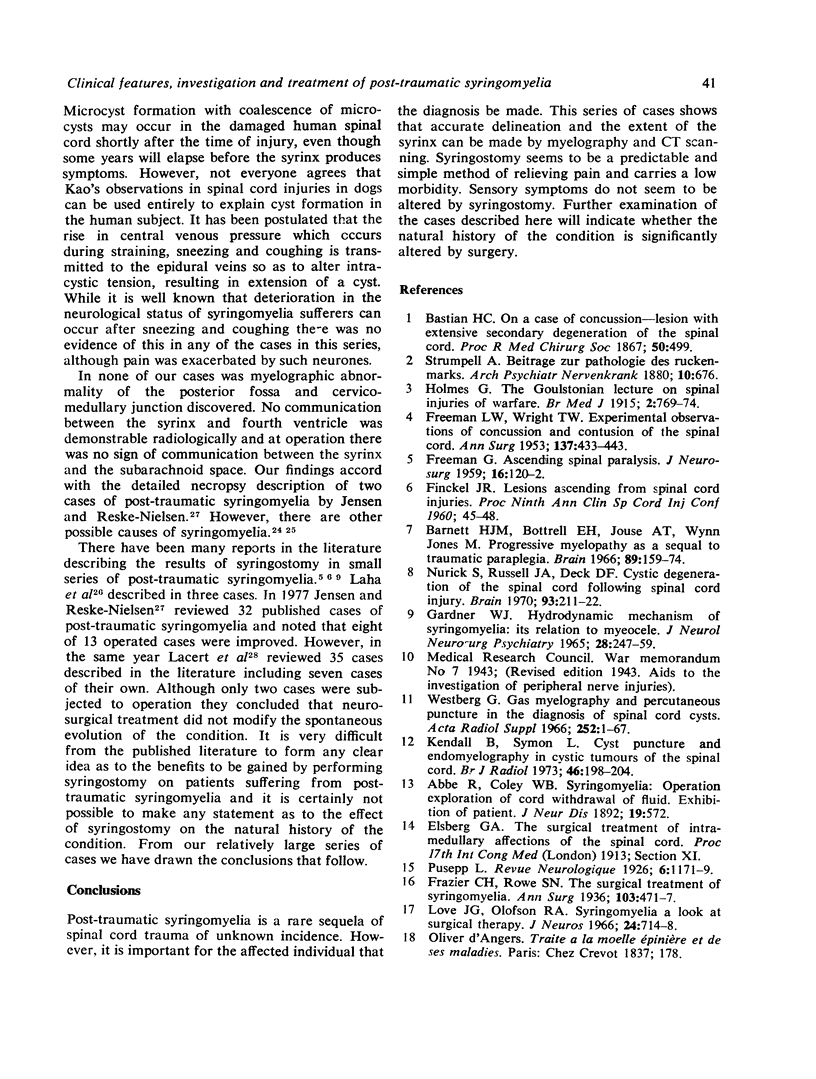
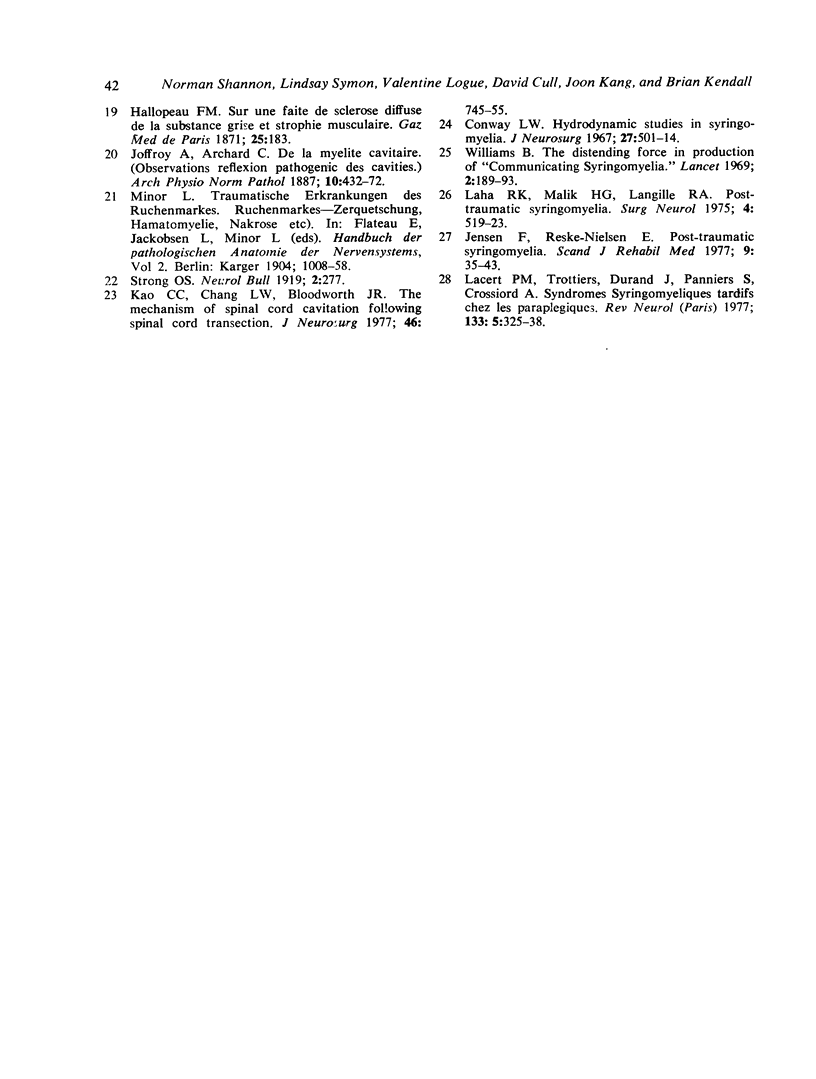
Images in this article
Selected References
These references are in PubMed. This may not be the complete list of references from this article.
- Barnett H. J., Botterell E. H., Jousse A. T., Wynn-Jones M. Progressive myelopathy as a sequel to traumatic paraplegia. Brain. 1966 Mar;89(1):159–174. doi: 10.1093/brain/89.1.159. [DOI] [PubMed] [Google Scholar]
- Conway L. W. Hydrodynamic studies in syringomyelia. J Neurosurg. 1967 Dec;27(6):501–514. doi: 10.3171/jns.1967.27.6.0501. [DOI] [PubMed] [Google Scholar]
- FREEMAN L. W. Ascending spinal paralysis; case presentation. J Neurosurg. 1959 Jan;16(1):120–122. doi: 10.3171/jns.1959.16.1.0120. [DOI] [PubMed] [Google Scholar]
- FREEMAN L. W., WRIGHT T. W. Experimental observations of concussion and contusion of the spinal cord. Ann Surg. 1953 Apr;137(4):433–443. doi: 10.1097/00000658-195304000-00001. [DOI] [PMC free article] [PubMed] [Google Scholar]
- GARDNER W. J. HYDRODYNAMIC MECHANISM OF SYRINGOMYELIA: ITS RELATIONSHIP TO MYELOCELE. J Neurol Neurosurg Psychiatry. 1965 Jun;28:247–259. doi: 10.1136/jnnp.28.3.247. [DOI] [PMC free article] [PubMed] [Google Scholar]
- Jensen F., Reske-Nielsen E. Post-traumatic syringomyelia. Review of the literature and two new autopsy cases. Scand J Rehabil Med. 1977;9(1):35–43. [PubMed] [Google Scholar]
- Kendall B., Symon L. Cyst puncture and endomyelography in cystic tumours of the spinal cord. Br J Radiol. 1973 Mar;46(543):198–204. doi: 10.1259/0007-1285-46-543-198. [DOI] [PubMed] [Google Scholar]
- Laha R. K., Malik H. G., Langille R. A. Post-traumatic syringomyelia. Surg Neurol. 1975 Dec;4(6):519–522. [PubMed] [Google Scholar]
- Love J. G., Olafson R. A. Syringomyelia: a look at surgical therapy. J Neurosurg. 1966 Apr;24(4):714–718. doi: 10.3171/jns.1966.24.4.0714. [DOI] [PubMed] [Google Scholar]
- Nurick S., Russell J. A., Deck M. D. Cystic degeneration of the spinal cord following spinal cord injury. Brain. 1970;93(1):211–222. doi: 10.1093/brain/93.1.211. [DOI] [PubMed] [Google Scholar]
- Williams B. The distending force in the production of "communicating syringomyelia". Lancet. 1969 Jul 26;2(7613):189–193. doi: 10.1016/s0140-6736(69)91427-5. [DOI] [PubMed] [Google Scholar]




